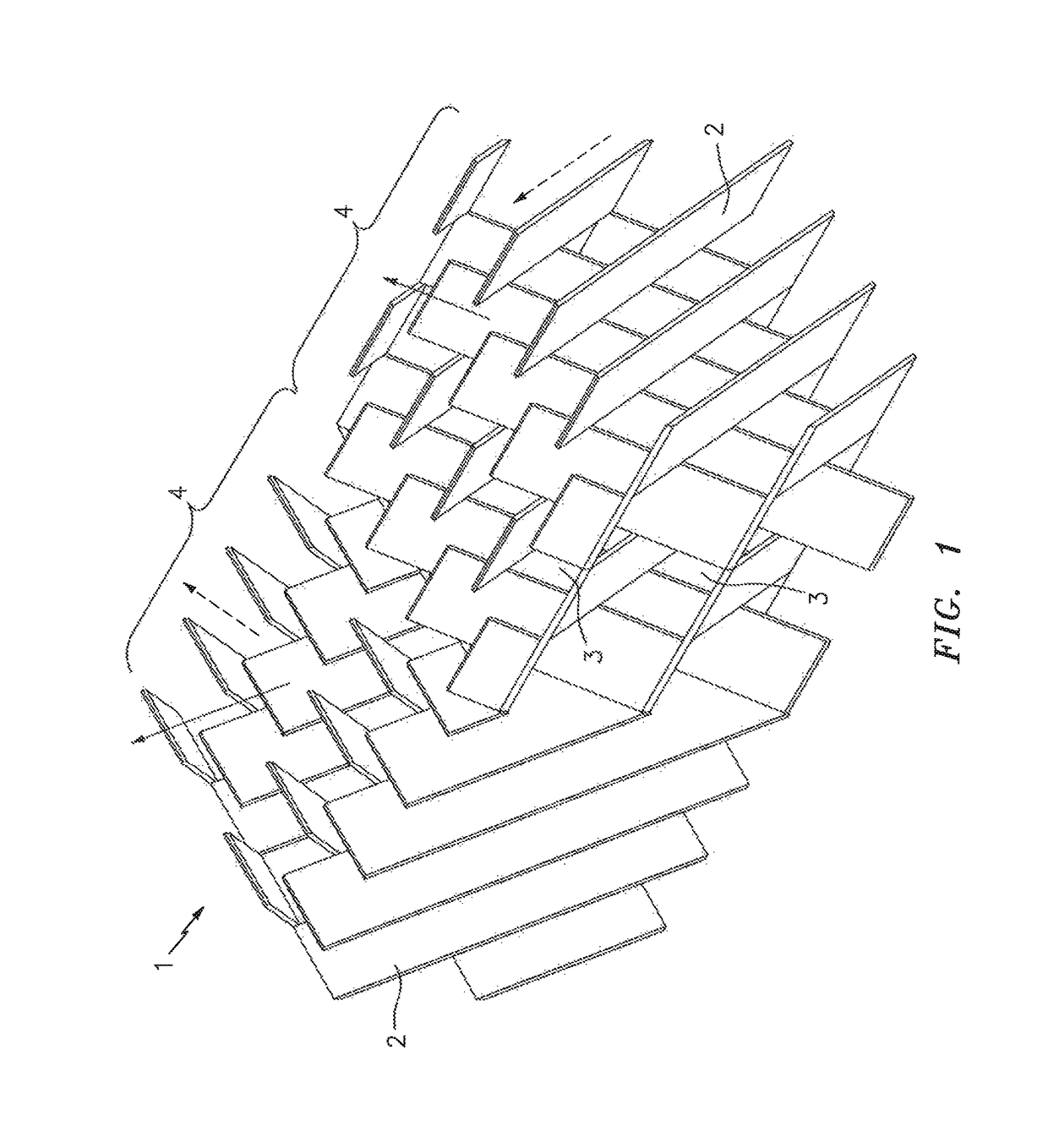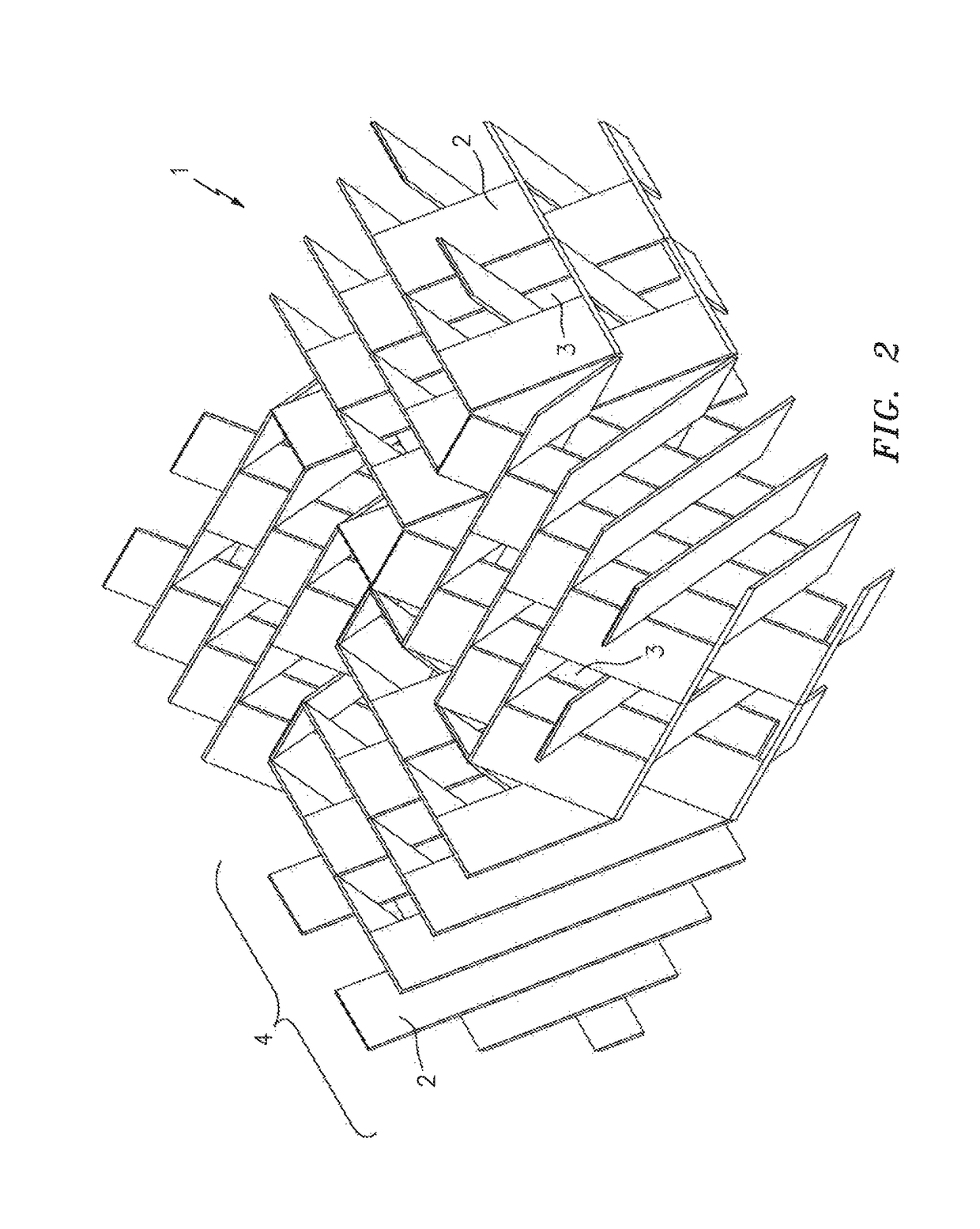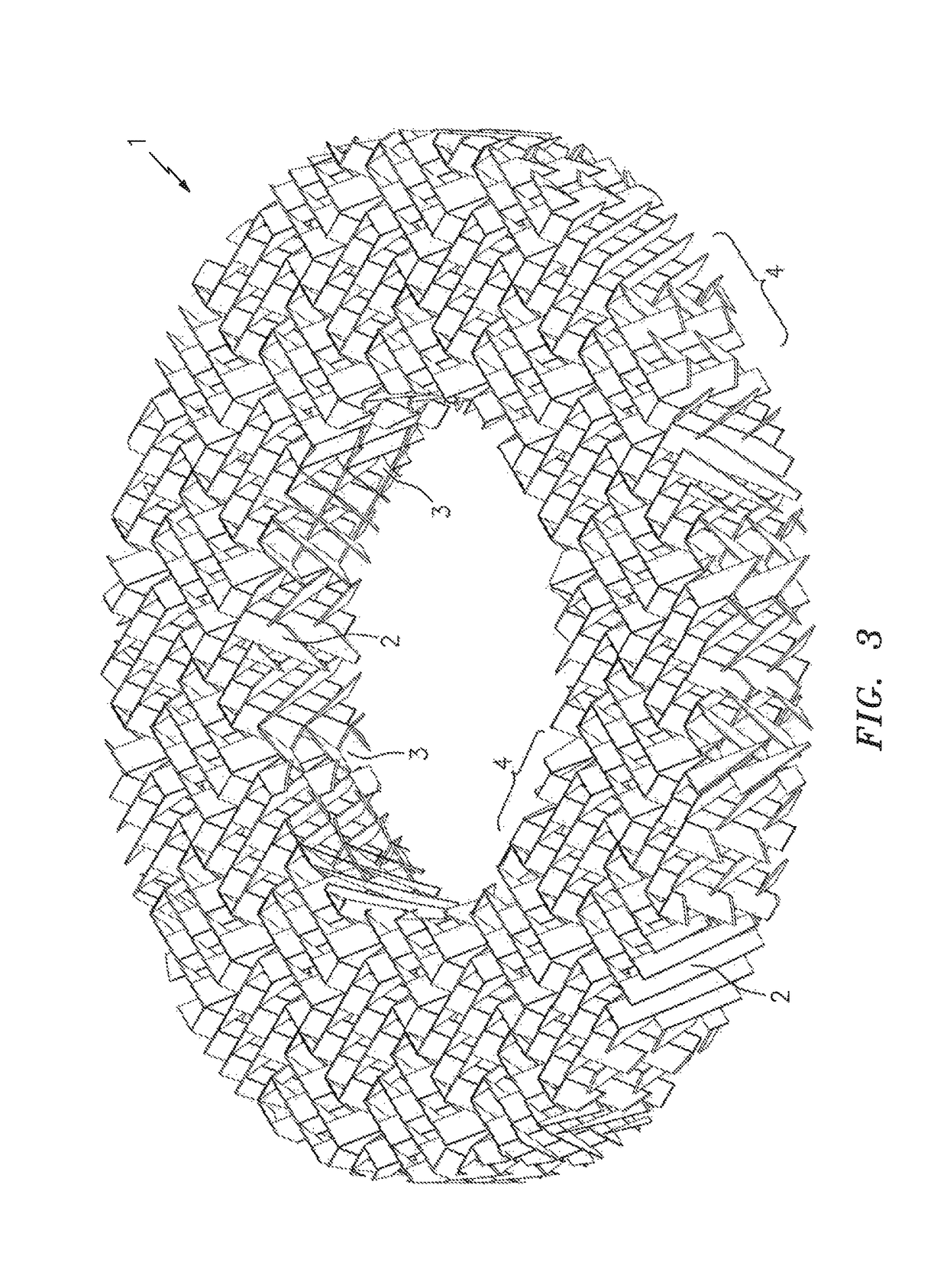Multi directional device for vapor-solid mixing
a multi-directional device and vapor solid technology, applied in the field of internals, can solve the problems of increasing the combustion load of the regenerator, affecting the final yield of the converted product, and affecting the stripping operation, so as to achieve the effect of increasing the flow area, increasing the surface area, and increasing the mixing intensity
- Summary
- Abstract
- Description
- Claims
- Application Information
AI Technical Summary
Benefits of technology
Problems solved by technology
Method used
Image
Examples
Embodiment Construction
[0030]Embodiments of the disclosure are described more fully hereinafter with reference to the accompanying drawings, in which example embodiments of the disclosure are shown. This disclosure may, however, be embodied in many different forms and should not be construed as limited to the example embodiments set forth herein; rather, these embodiments are provided so that this disclosure will be thorough and complete, and will fully convey the scope of the embodiments to those skilled in the art. Like numbers refer to like, but not necessarily the same or identical, elements throughout.
[0031]FIG. 1 presents two element structures (4) of the claimed packing system (1). Each element structure (4) contains a plurality of substantially flat planar baffles or blade structures, i.e., blades (2). Each blade (2) has a plane that provides a direction for the gas and solids to flow along. The plurality of planar blades (2) are arranged in alternating intersecting planes and provide a plurality ...
PUM
 Login to View More
Login to View More Abstract
Description
Claims
Application Information
 Login to View More
Login to View More - R&D
- Intellectual Property
- Life Sciences
- Materials
- Tech Scout
- Unparalleled Data Quality
- Higher Quality Content
- 60% Fewer Hallucinations
Browse by: Latest US Patents, China's latest patents, Technical Efficacy Thesaurus, Application Domain, Technology Topic, Popular Technical Reports.
© 2025 PatSnap. All rights reserved.Legal|Privacy policy|Modern Slavery Act Transparency Statement|Sitemap|About US| Contact US: help@patsnap.com



